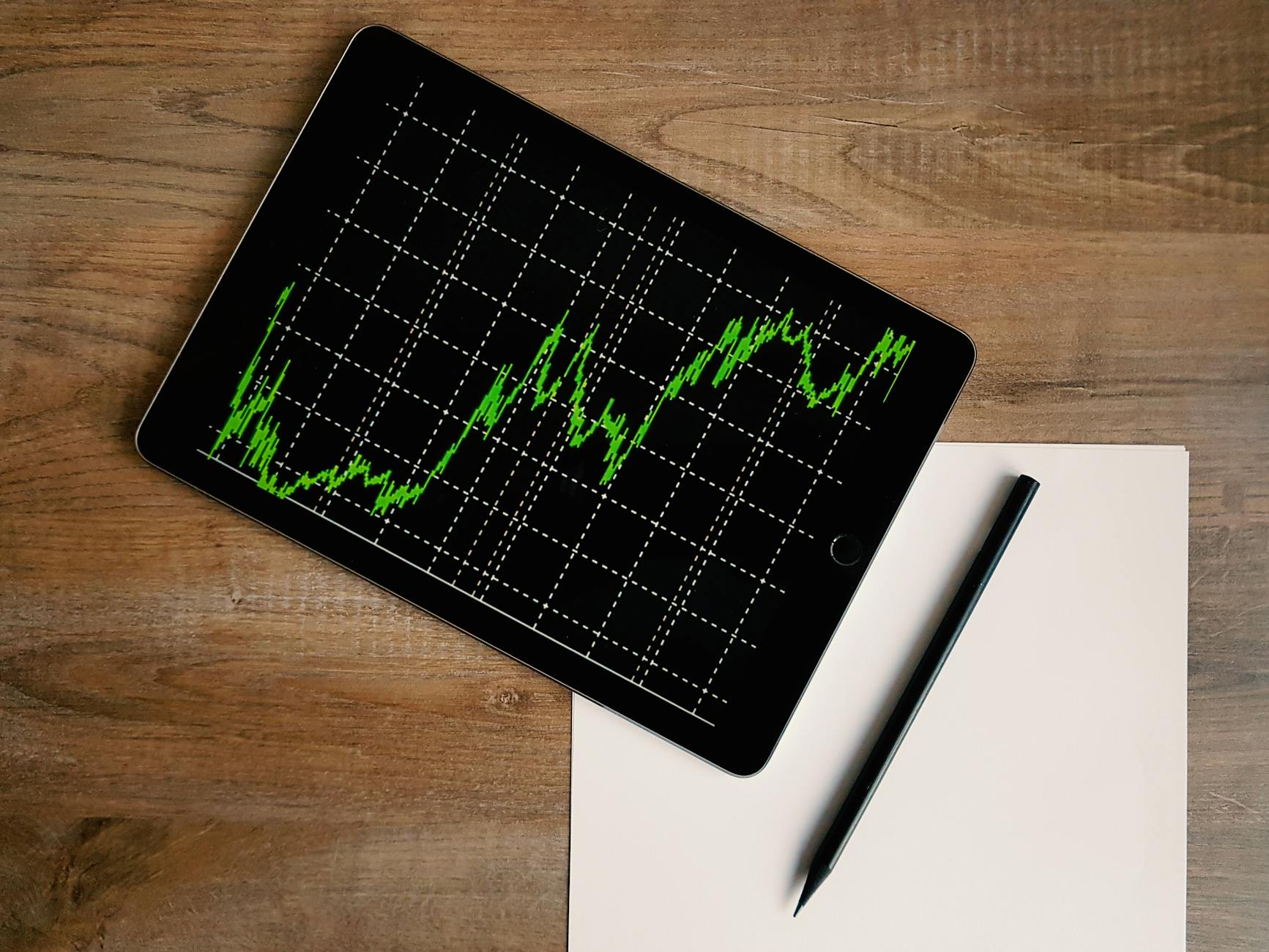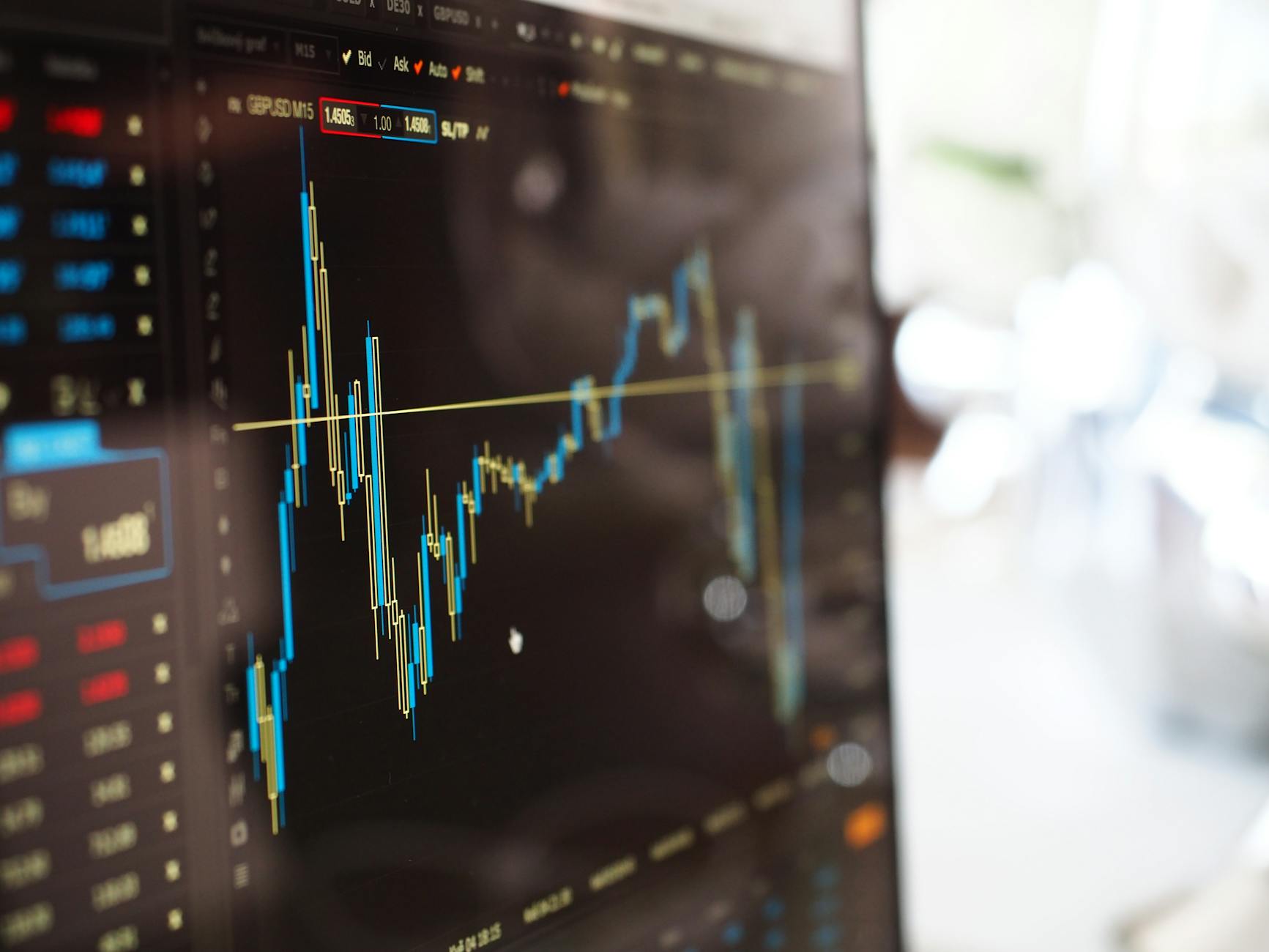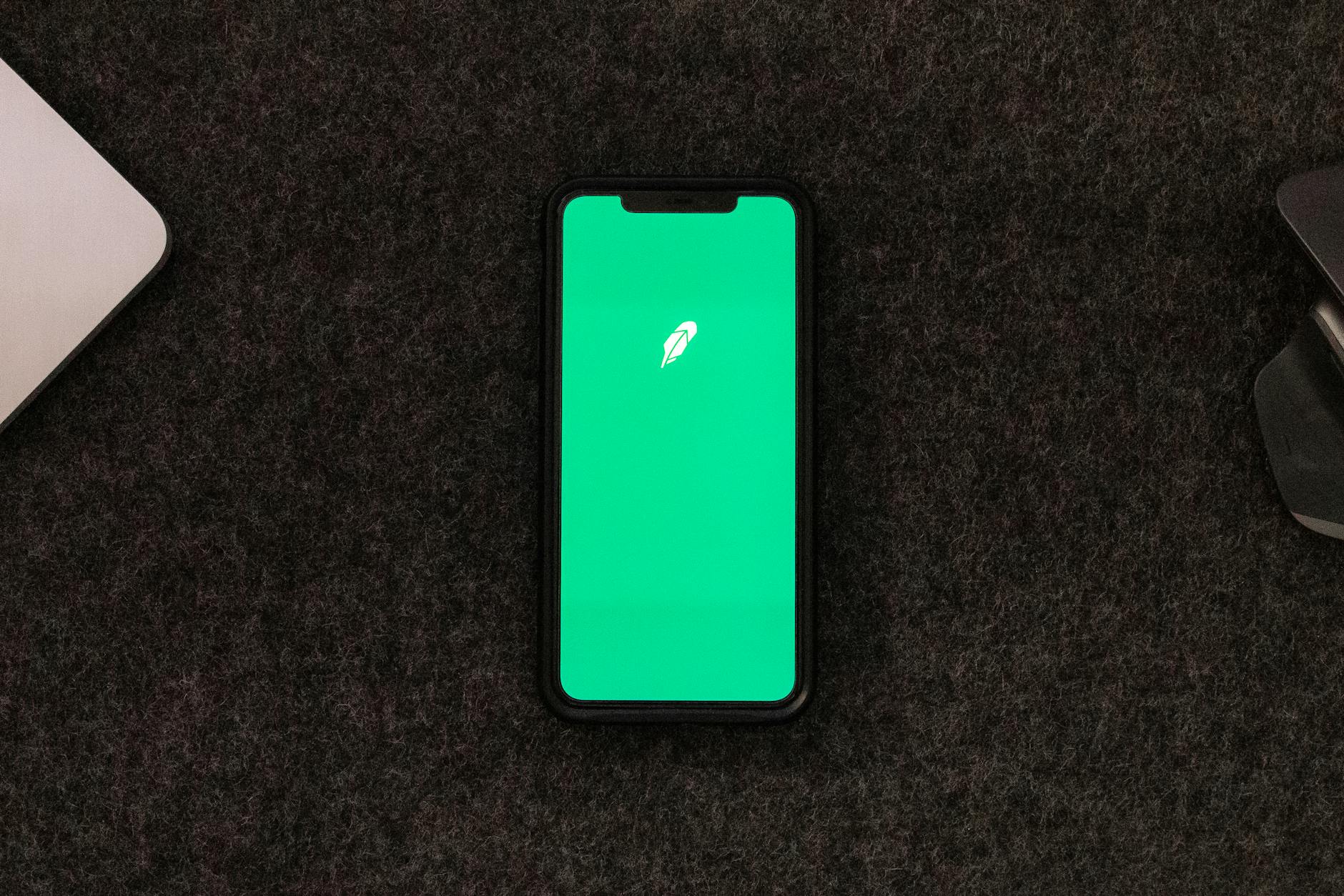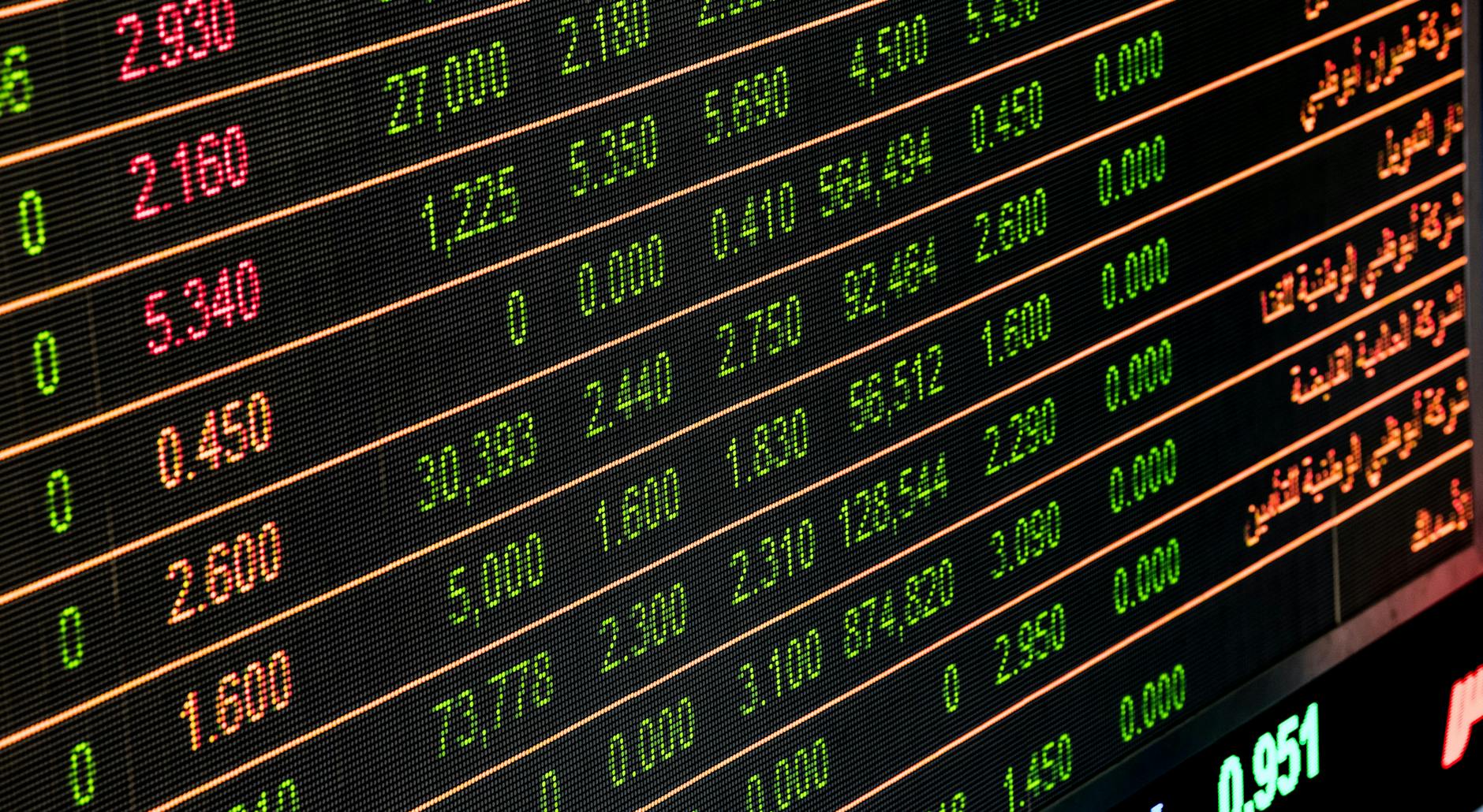Your Comprehensive Guide to Nasdaq Futures in 2024
Have you ever wondered how investors can predict the stock market's next move? Nasdaq futures hold the key to understanding those trends. In essence, Nasdaq futures allow traders to bet on the future performance of the Nasdaq index, which tracks the tech-heavy segment of the stock market.
This post will explain how Nasdaq futures work, their importance in financial markets, and why investors keep a close eye on them. We’ll also cover how you can use this information to make informed financial decisions. Whether you're a seasoned trader or just curious about the market, this guide will give you the insights you need. Let’s dive into the fascinating world of Nasdaq futures and see how they impact global finance.
What Are Nasdaq Futures?
Nasdaq futures are an essential part of the stock market, offering investors a way to speculate on the future value of the Nasdaq stock index. These financial tools allow traders to predict the movements of technology stocks that are listed on the Nasdaq exchange. But what exactly are Nasdaq futures, and how do they work? Let's dive in.
 Photo by Burak The Weekender
Photo by Burak The Weekender
Understanding Futures Contracts
Futures contracts are agreements to buy or sell a particular asset at a predetermined price at a specified time in the future. When it comes to Nasdaq futures, the underlying asset is the Nasdaq-100 index, which comprises 100 of the largest non-financial companies listed on the Nasdaq stock exchange.
The Role of Nasdaq Futures in the Market
Nasdaq futures play a critical role in the financial market. These derivatives offer:
-
Hedging Opportunities: Investors can use Nasdaq futures to protect themselves from market volatility. For instance, if an investor holds a portfolio heavily weighted in tech stocks, they can buy or sell futures to offset potential losses.
-
Speculative Trading: Traders often use Nasdaq futures to make educated guesses about the market's direction. By anticipating whether the index will rise or fall, they can place trades accordingly to earn a profit.
-
Price Discovery: Futures markets help in determining the price of the underlying assets by incorporating information from a variety of sources. This helps in setting more accurate prices for stocks within the Nasdaq index.
How Nasdaq Futures Work
To understand how Nasdaq futures work, think of them as a bet on the future performance of the Nasdaq-100 index. Traders buy or sell contracts based on where they think the index will go. If they predict correctly, they stand to make a profit.
Here’s a simplified example:
- Buying Futures: If you believe the Nasdaq-100 index will go up, you buy a futures contract. If the index rises, the value of your contract increases.
- Selling Futures: Conversely, if you think the index will drop, you sell a futures contract. If the index falls, the value of your contract increases.
Who Trades Nasdaq Futures?
Nasdaq futures attract a mix of participants:
- Individual Investors: Looking to hedge their portfolios or speculate.
- Institutional Investors: Such as mutual funds and hedge funds, use futures for both hedging and speculative purposes.
- Market Makers: Provide liquidity to the market by buying and selling futures contracts.
Benefits and Risks
Nasdaq futures come with their share of benefits and risks.
Benefits:
- Leverage: Futures allow you to control large amounts of stock with relatively small capital.
- Liquidity: The market for Nasdaq futures is very liquid, meaning you can buy and sell contracts easily.
Risks:
- Leverage: While leverage can amplify gains, it can also magnify losses.
- Market Volatility: Futures markets can be highly volatile, and prices can move swiftly.
Understanding these aspects is crucial for anyone looking to trade Nasdaq futures.
Nasdaq futures provide a fascinating and nuanced way to engage with the stock market, especially for those interested in technology stocks. Whether you’re looking to hedge risk or speculate on future price movements, understanding how these instruments work can be incredibly beneficial.
Feel free to explore further sections to understand how you can start trading Nasdaq futures, what strategies to use, and what to watch out for in this dynamic market.
Key Features of Nasdaq Futures
Understanding Nasdaq futures can open doors to smart trading decisions. Let's break down some of the most crucial features that define these futures contracts.
Contract Specifications
Nasdaq futures contracts come with specific details you should know. The contract size, tick values, and expiration dates are key elements.
- Contract Size: A standard Nasdaq futures contract is worth $20 times the Nasdaq-100 index. For example, if the Nasdaq-100 index is at 14,000 points, the contract value would be $280,000.
- Tick Value: The minimum price movement (tick) is 0.25 points, equivalent to $5.
- Expiration Dates: These futures typically expire on the third Friday of the contract month. There are contracts for every quarter—March, June, September, and December.
These specifics make keeping track of open positions and calculating potential profits or losses straightforward.
Trading Hours
Nasdaq futures are available for trading almost 24 hours a day, which is a huge advantage for those looking to make strategic moves at different times.
- Regular Trading Hours: Most trades occur between 9:30 AM and 4:00 PM ET, aligning with the stock market.
- Extended Trading Hours: However, you can also trade before and after these hours, from 6:00 PM to 5:00 PM ET the next day.
This extensive schedule allows traders from around the world to participate, making it easier to respond to global events.
Margin Requirements
When trading Nasdaq futures, you need to be aware of initial and maintenance margin requirements.
- Initial Margin: This is the amount you need to initiate a position. For Nasdaq futures, it's typically around 5-10% of the contract value. If you're trading a contract valued at $280,000, your initial margin could be between $14,000 and $28,000.
- Maintenance Margin: This is the minimum balance you need to keep your position open. It's usually a bit lower than the initial margin, about 75-80% of it.
Keeping an eye on your margins ensures you have enough funds to withstand any market fluctuations.
 Photo by energepic.com
Photo by energepic.com
How Nasdaq Futures Work
Nasdaq futures are financial contracts that allow traders to speculate on the future value of the Nasdaq Composite Index. These futures can be powerful tools for both speculation and hedging purposes, reflecting the market's expectations.
Speculation and Hedging
 Photo by Tima Miroshnichenko
Photo by Tima Miroshnichenko
Traders use Nasdaq futures to try to make money by predicting how the market will move. This is called speculation. For example, if you think the price of the Nasdaq Composite Index will go up, you can buy futures contracts. If the price goes up, you make money. But if it goes down, you lose money. It's like betting on your favorite sports team—if they win, you win. If they lose, you lose.
On the other hand, futures are also used for hedging. This is a way to protect yourself against big losses. Imagine you're a big tech company worried that the market might crash. You can sell Nasdaq futures to lock in today's prices. If the market does crash, the money you make from these futures can help cover your losses.
Key points to remember about speculation and hedging with Nasdaq futures:
- Speculation: Traders guess the future direction of the market.
- Hedging: Helps protect against unfavorable market movements.
Settlement Process
The settlement process of Nasdaq futures is what happens when the contract expires. Unlike stocks, where you own part of a company, futures are agreements to buy or sell the index at a set price on a future date.
When the contract expires, it must be settled. There are two main ways this happens:
- Cash Settlement: Most Nasdaq futures are settled in cash. This means no physical delivery of assets. Suppose you agreed to buy at a certain price, and the actual price is higher; you'll get the difference in cash. If the price is lower, you'll pay the difference.
- Physical Settlement: This is rare for Nasdaq futures. It involves the actual delivery of assets, but you mostly find this in commodity futures like oil or wheat.
Both settlement types aim to make sure that the agreement between buyers and sellers is honored.
By understanding speculation, hedging, and the settlement process, you can navigate the world of Nasdaq futures with more confidence and perhaps even a bit more excitement.
Keep an eye on the market, because your next move could be a game-changer.
Factors Influencing Nasdaq Futures
Understanding what moves Nasdaq futures is crucial for investors and traders. These financial products can be influenced by a variety of factors ranging from economic indicators to market sentiment. Here’s a look at the key elements that play a vital role in shaping the prices of Nasdaq futures.
Economic Indicators
Economic reports provide vital clues about the health of the economy, and they can have a significant impact on Nasdaq futures. Let's explore some of the key economic indicators that traders keep an eye on:
-
Gross Domestic Product (GDP): This measures the total economic output of a country. When GDP is strong, it signals a healthy economy, which can boost investor confidence and Nasdaq futures prices.
-
Unemployment Rate: High unemployment can be a red flag, indicating economic trouble. Conversely, low unemployment rates suggest a strong labor market, which can positively affect Nasdaq futures.
-
Inflation: Measured by indexes like the Consumer Price Index (CPI), inflation affects purchasing power. If inflation is too high, it might lead to higher interest rates, which can negatively impact Nasdaq futures.
Other notable economic indicators include:
- Consumer Confidence Index (CCI): Gauges consumer sentiment.
- Retail Sales: Tracks the health of consumer spending.
- Federal Reserve Decisions: Monetary policies, such as changes in interest rates, can also influence futures.
Market Sentiment
Market sentiment reflects the overall attitude of investors toward financial markets. It can be driven by various factors and often has a direct impact on Nasdaq futures pricing.
Investor Sentiment
Investor sentiment can be affected by:
-
News Events: Breaking news, whether it's related to politics, technology, or even natural disasters, can influence investor moods. Positive news can boost confidence, while negative news can trigger sell-offs.
-
Earnings Reports: Company earnings reports can heavily impact individual stocks, which in turn affect the Nasdaq futures. Strong earnings results can drive futures higher, while disappointing results can pull them down.
-
Analyst Ratings: Upgrades or downgrades from analysts can sway investor opinions and lead to significant market movements.
Social Media and Trends
In the digital age, platforms like Twitter and Reddit play a role in shaping market sentiment. A viral tweet or a trending topic can spark a buying or selling frenzy among retail investors, affecting Nasdaq futures.
Conclusion
Understanding the factors that influence Nasdaq futures can help traders make more informed decisions. Economic indicators and market sentiment are key drivers, and staying updated on these can offer a strategic advantage.
 Photo by Bradley Hook
Photo by Bradley Hook
Trading Strategies for Nasdaq Futures
Trading Nasdaq futures can be an exciting way to participate in one of the world's most dynamic markets. Whether you're a day trader looking to capitalize on short-term movements or an investor aiming for long-term growth, there are strategies to suit your style and goals.
Day Trading Nasdaq Futures
Day trading Nasdaq futures involves buying and selling within the same trading day. This strategy seeks to profit from small price movements.
 Photo by Nataliya Vaitkevich
Photo by Nataliya Vaitkevich
Here are some strategies that can help you succeed:
- Scalping: This involves making dozens or even hundreds of trades in a single day. The goal is to "scalp" small profits from each trade.
- Momentum Trading: This strategy focuses on stocks that are moving significantly in one direction on high volume, riding the trend until it shows signs of reversing.
- Breakout Trading: Identify key support and resistance levels. When the price breaks out of these levels, it can lead to rapid price movements.
Risk management is crucial when day trading:
- Stop-Loss Orders: Always set a stop-loss order to limit potential losses.
- Position Sizing: Never risk more than a small percentage of your account on a single trade.
Long-Term Investment Strategies
While day trading is exciting, it can also be stressful. Long-term investment strategies provide a different approach. Investors use Nasdaq futures to hedge their investments or to gain long-term exposure to the technology sector.
- Buy and Hold: Similar to investing in individual stocks, you can buy Nasdaq futures and hold them for an extended period. This approach benefits from the overall growth of the Nasdaq index.
- Hedging: If you have a portfolio heavy in tech stocks, you can use Nasdaq futures to hedge against potential losses by shorting futures contracts.
- Dollar-Cost Averaging: Regularly invest a fixed amount into Nasdaq futures regardless of the price. This strategy smooths out price fluctuations over time.
Risk management for long-term strategies:
- Diversification: Don't put all your eggs in one basket. Spread your investments across different assets.
- Regular Monitoring: Even long-term investments require regular check-ins to ensure they align with your financial goals.
Each strategy, whether short-term or long-term, offers unique opportunities. By understanding and implementing these strategies, you can better navigate the fast-paced world of Nasdaq futures.
Risks Involved in Trading Nasdaq Futures
Trading Nasdaq Futures can be exciting and profitable, but it also carries significant risks. Understanding these risks can help you make better trading decisions and avoid costly mistakes.
Market Volatility
Market volatility is one of the most prominent risks in trading Nasdaq Futures. Prices can move quickly and unpredictably, making it difficult to predict outcomes.
 Photo by Andrew Neel
Photo by Andrew Neel
How does volatility impact trading?
When the market is volatile, prices can swing dramatically in both directions. This can lead to:
- Unexpected Losses: A sudden price drop can eat into your capital.
- Emotional Decisions: Rapid changes can cause stress, leading to impulsive decisions.
- Increased Margin Calls: Brokers may require more funds to cover potential losses.
To mitigate the effects of market volatility, consider:
- Setting Stop-Loss Orders: These automatically sell your position if the price drops to a certain level, limiting potential losses.
- Diversifying Your Portfolio: Don’t put all your eggs in one basket. Spread your investments across different assets.
Leverage Risks
Leverage allows traders to control a large position with a small amount of capital. While this can amplify gains, it also magnifies losses.
What are the risks of using leverage?
Using leverage in trading can be a double-edged sword:
- Increased Exposure: While it can boost profits, it can also lead to significant losses. If the market moves against your position, you could lose more than your initial investment.
- Margin Calls: If your account balance falls below the broker’s required minimum, you will have to deposit more money or close your positions at a loss.
- Higher Interest Costs: Borrowing money to increase your trading position can incur interest charges, adding to your overall costs.
To manage leverage risks, follow these tips:
- Use Lower Leverage Ratios: Don’t max out your leverage. Use a ratio that you’re comfortable with.
- Regularly Monitor Your Positions: Keep an eye on your trades to act quickly if the market moves against you.
- Educate Yourself: Make sure you understand how leverage works before you start trading.
By being aware of these risks and taking steps to manage them, you can trade Nasdaq Futures more confidently and responsibly.
Conclusion
After diving into the depths of Nasdaq futures, it's clear that understanding and leveraging these financial instruments can be a game-changer for traders at any level. Let's recap the key points discussed and highlight why Nasdaq futures deserve a spot in your trading strategy.
Key Takeaways
-
Market Insight: Nasdaq futures give you a snapshot of the future performance of the technology and growth sectors. They provide crucial information for making timely trading decisions.
-
Risk Management: These futures can be an effective tool for hedging against potential market downturns, helping you protect your gains.
-
Liquidity and Flexibility: With high trading volumes, you can enter and exit positions with ease. Nasdaq futures offer flexibility with mini and micro contracts, allowing participation according to your investment scale.
Encouragement to Act
Incorporating Nasdaq futures into your trading arsenal could be the strategic edge you need. Imagine having the ability to predict market moves and adjust your strategies in real-time. Exciting, right? Whether you are a seasoned trader or new to the game, Nasdaq futures can provide you with the tools you need to navigate the financial landscape with confidence.
So, why wait? Start exploring Nasdaq futures today and take your trading strategies to the next level. Time is of the essence in trading, and the opportunities brought by Nasdaq futures are too significant to overlook. Happy trading!
 Photo by Pixabay
Photo by Pixabay

